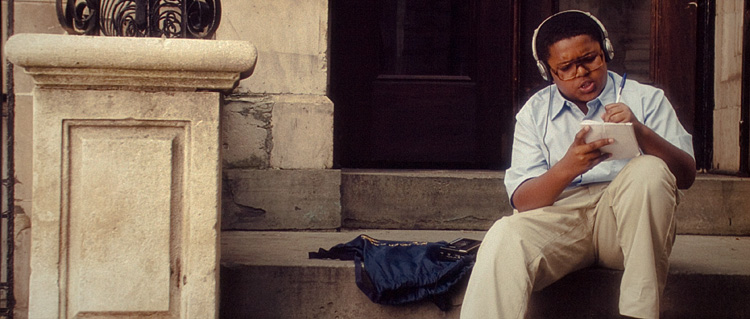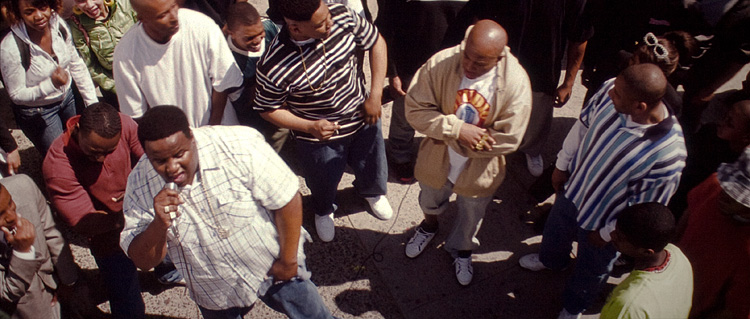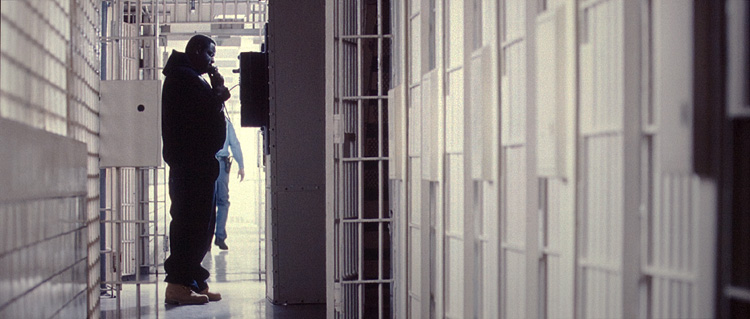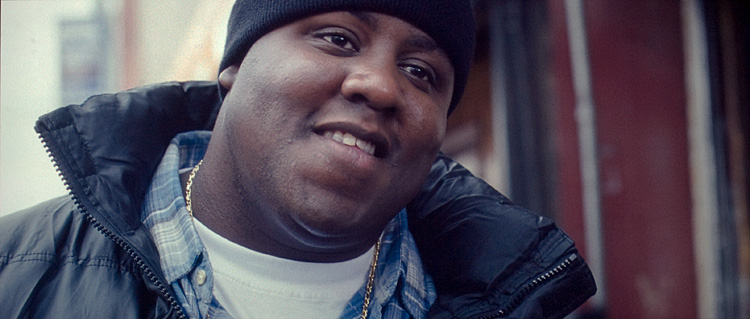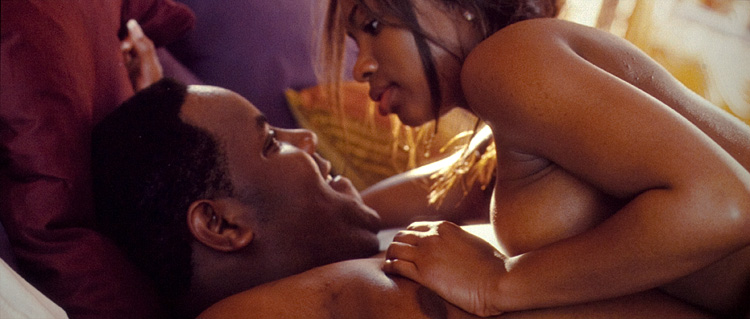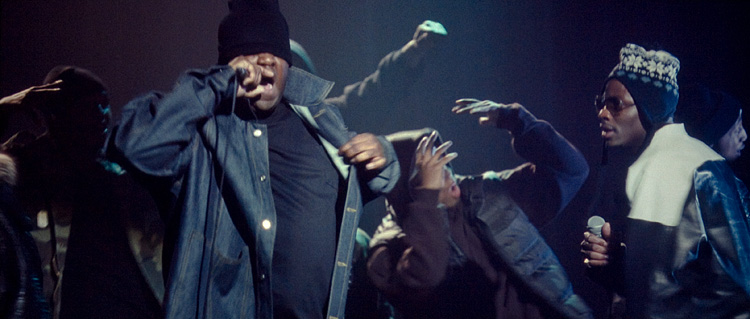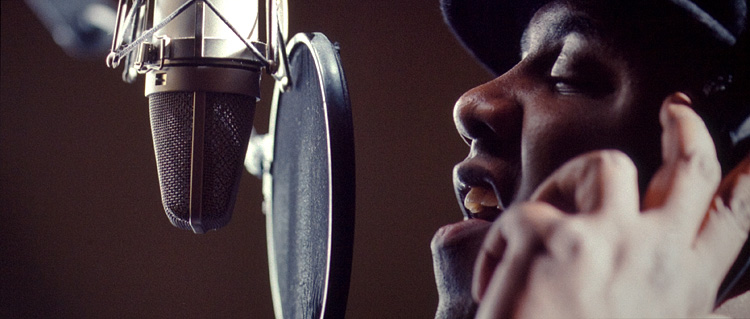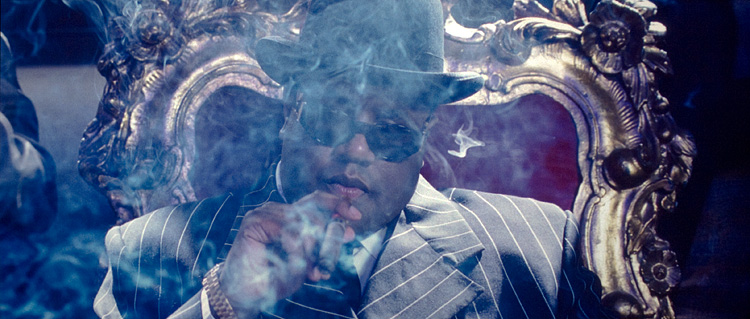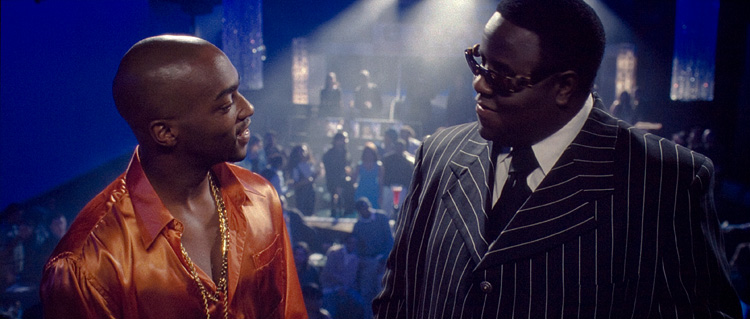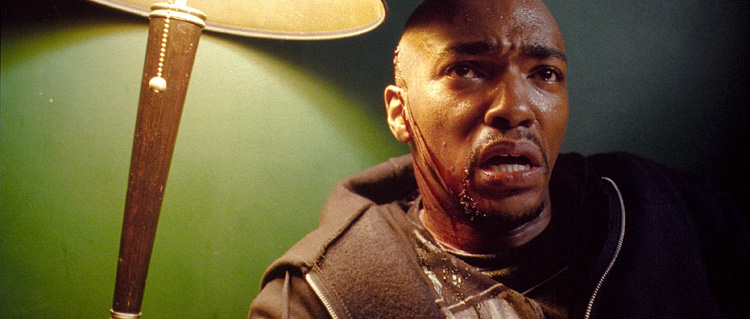Review by Leonard Norwitz
Studio:
Theatrical: Fox Searchlight &Violetta Wallace Films/By Storm
Films
Blu-ray: 20th Century Fox Home Entertainment
Disc:
Region: A
Chapters: 32
Size: 50 GB
Case: Standard Blu-ray case
Release date: April 21, 2009
Video:
Aspect ratio: 2.40:1
Resolution: 1080p
Video codec: AVC @ 20 Mbps
Audio:
English DTS HD-Master Audio 5.1
Subtitles:
English SDH, Spanish & French
Extras:
• Theatrical & Director's Cuts
• Audio Commentary by Director George Tillman, Jr.,
Co-Screenwriters Reggie Bythewood & Cheo Coker, and Editor
Dirk Westervelt
• Audio Commentary by Producer (& Biggie's Mom) Violetta
Wallace, Producers (& Biggie's Co-Managers) Wayne Barrow &
Mark Pitts
• Bonus View: Life After Death: Making Notorious
• Behind-the-Scenes: The Making of Notorious (27:23)
• Notorious Thugs: Casting the Movie (9:05)
• Biggie Boot Camp (6:48)
• I Got a Story to Tell: The Lyrics of Biggie Smalls (9:32)
• Anatomy of a B.I.G. Performance (5:15)
• Never-Before-Seen Concert Footage of B.I.G. (3:43)
• The B.I.G. 360
• Deleted Scenes (12:15)
• The Music BD-Live
• Digital Copy Disc
The Film:
6
I wonder if this movie would hold much interest if it
weren't about a man who didn't live long enough to settle on
a name for himself, a man who only managed to release a
single CD before being murdered by assailant(s) still
unknown - a colorful rapper who may or may not have been
implicated in the death of his onetime friend and fellow
rapper, Tupac Shakur?
The extra features and audio commentaries push the idea that
the movie is about Christopher Wallace's journey from to
man, but I felt more persuasive was the journey that Jamal
Woolard made from rapper to actor. For me, the moment he
nailed the character and became an actor was in the scene
where he first confesses his shortcomings to Fay and then
seduces her with that riffing smile of his. From then on he
had me in the palm of his hand, and I wanted to know how he
comes out.
The movie, produced by Biggie's mom and his business
associates, is not trying to tell Biggie's "true story" or
even a balanced one, nor does it try to resolve the mystery
of his murder. But the film can't help but show its bias.
The movie's epitaph pretty much sums up the intention:
Christopher Wallace did not live to see the release of his
second album, "Life After Death," which sold 10 million
copies worldwide. With his life, he proved that no dream is
too big.
I suppose if you're his mother you would think that, but to
me the film proves quite the opposite. In any case, even if
we take the movie's view of things at face value – and there
is no good reason not to – Biggie does not actually get to
be the "man" that his mother and friends feel he finally
accrued to. But he does appear to have put aside, if only
for the time being, the major issues (women, drugs-dealing
and professional competition) that have kept him down.
Image:
8/9
The first number indicates a relative level of excellence
compared to other Blu-ray video discs on a ten-point scale.
The second number places this image along the full range of
DVD and Blu-ray discs.
The overall look of the movie is unusual in that it has at
least two very different "looks" for color and lighting.
Much of the daytime action on the streets and in or on the
way to jail is desaturated, while most of the family and
intimate scenes with Biggie's girlfriends are in rich color
with warm gold highlights and lots of extra light to bring
out skin tones. The effect is unrealistic but emotionally
persuasive. The image is very sharp with a nice hint of
grain. There is the occasional nighttime scene where some
noise creeps in, but otherwise the transfer appears to be
intact and unmanipulated.
Audio & Music:
7/7
Once we get used to Jamal Woolard's recreation of Biggie
Small's delivery and manner of talking in general, the
dialogue is clear enough to make out and only gets a little
buried in crowd scenes. There are basically two venues for
music: in the studio, which comes off in the old Hollywood
style as if what we're hearing is what's playing, when what
we're hearing is more like the finished product. It's such a
common cliché that we have come to accept it - exceedingly
unrealistic, but always works. The concerts are more like
the real thing: lots of thumping bass, crowd noise and the
DJ trying to pump up the EQ in vain attempts to rise above
it.
Operations:
7
Extra points for supplying subtitles for rap, even if it
coming from a recording rather than the actor on screen
(unlike 8 Mile). The producers of this video take the
concept of rap lyric seriously and the use of subtitles is
the proof.
Extras:
7
If ever there was an instance where "Collector's Edition"
applies, it would be this one. It's hard to imagine what is
left out short of additional B.I.G. concert footage - and we
can appreciate why that would not be the province of this
Blu-ray (more on that shortly.)
First, a note on the two commentaries: The one by the
producers, Biggie's mom and two managers, who reminisce
about the boy and the man and how the movie does or does not
correspond to their memory. I found it telling that Violetta
saw the script only after the movie was set to go. The other
commentary is by the filmmakers who pretty much stick with
production issues of how Biggie's story is manifest in
cinematic terms. Fox supplements these commentaries with a
BonusView in which talking heads occasionally pop up to do
their thing. "Behind-the-Scenes: The Making of Notorious"
also gets into how the Wallace family got involved in the
making of the movie.
"Notorious Thugs" takes a look at casting for all the main
roles. "Biggie Boot Camp" is Tillman's idea for bringing the
cast together for a few weeks of rehearsal for the actors to
learn the language and moves of rap. "I Got a Story to Tell"
doesn't quite do what I hoped, which was to discuss the
lyrics (instead of merely assert their greatness). I would
have liked to know why Biggie's lyrics are thought of so
highly. Don't expect an answer here. The "Anatomy of a B.I.G.
Performance" shows how live archival footage of a B.I.G.
concert was transformed into a concert segment in the movie.
Along with that is the only low-definition feature on the
disc: raw footage of a "never-before-seen" concert segment:
"Party & Bullshit". The image quality is poor and the audio
was so bad I could barely tell Biggie from anyone else, let
alone understand the lyric (which isn't subtitled – and no
wonder!).
"The B.I.G. 360" is one of the oddest bonus features I've
run up against – being little more than a 360-degree
nighttime panorama of the intersection of Wilshire & Fairfax
in Los Angeles. Seeing as how this self-rotating image has
little going for it besides the technical 360 angle of view
(and not a very engaging picture ion its own terms) and the
coincidence of the spot where Biggie was killed, I don't
quite get the indulgence. No director's comments with the
Deleted Scenes.
|
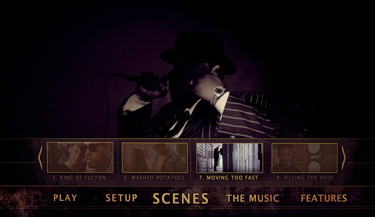 |
 |
|
 |
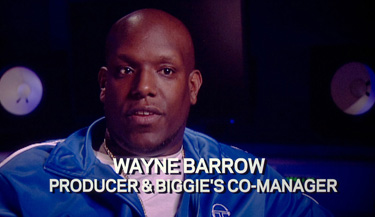 |
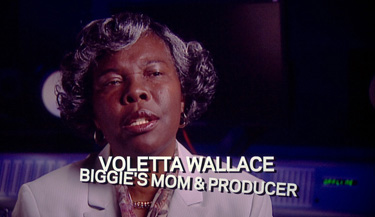 |
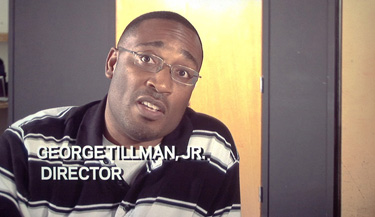 |
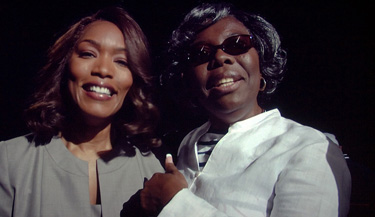 |
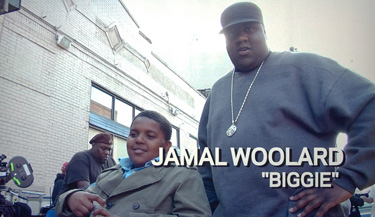 |
Bottom line:
7
I have to admit I've never been versed in rap. It often
sounds like a foreign language to me. I really made an
effort to appreciate it here because of the protagonist's
reputation, reviewing all the rap sequences with subtitles.
Just so you can put my remarks in some context. As a biopic,
I found the film to be average or a little better. The
acting and, from all reports, the vocal impersonations of
Wallace and Faith Evans, are nailed perfectly. My takeaway
is that the movie does not do what its producers intended:
namely to show the progression of boy to man, but rather how
forces beyond one's control commingle with one's intentions.
The image and audio are both very good; these together with
lots of extra features go to make this disc a must have for
fans and ought to be of interest to anyone who wants to know
what's been happening in contemporary American culture.
Leonard Norwitz
April 28th, 2009
![]()
![]()

![]()
![]()
![]()
![]()

![]()
![]()


